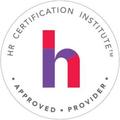Upskilling and Reskilling at Scale - Workforce Planning Exchange

Our past two meetings focused on building a skills taxonomy and talent mobility. This meeting built on those topics by discussing upskilling and reskilling. Here are the top things we explored.
Room to improve.
- Effectiveness. According to the Accelerating Total Workforce Readiness report, there is a lot of room to improve approaches to upskilling and reskilling the workforce. 12% overall said the current efforts were effective to a high or very high extent.
- Job rotations. Job rotation is the only continuous skilling practice correlated to stronger market performance. Check out Rotation Programs as Upskilling Strategies.
Key focus areas.
- Skill distance/adjency. One organization is upskilling/reskilling those with low "skill distance" or "skill adjacency". For example, it might be easier to teach a graphic designer to build on their current skills and become a user experience designer rather than teach them to become a nurse.
- High-demand roles. Other organizations are focused on developing high-demand roles like RNs, LPNs, and CMAs.
- Topics today and tomorrow. Many organizations are teaching power skills like emotional intelligence and evolving hard skills like data literacy now. The topic of change and resilience is an anticipated focus for 2023 and beyond.
Barriers and challenges.
- Time and resources are by far the biggest challenges organizations are struggling with.
- Infrastructure and a platform to deliver training in the most effective and efficient manner can be hard.
- Misalignment with or lack of an intuitive talent architecture.
Measurement.
- Most organizations measure satisfaction and Net Promoter Scores (NPS).
- One organization is creating pre and post 360 assessment for their manager training program and incorporating elements from the talent review process. They can compare success of those who completed the manager training compared to those who did not go through the training (A/B testing).
- Other common measurements include employee engagement and internal mobility.
A culture of continuous learning.
- 61% of high performing organizations said their leaders are regularly involved in coaching others. This used to be a Next Practice, but now it's a common best practice. It's also important for leaders to be held accountable for developing top talent.
- One organization recently created a 5-month leadership program. One senior leader is championing each month of the program (for a total of 5 senior leader champions).
- Another organization is providing leaders with tools and templates to create learning journeys with their employees, which creates a lot of excitement and buy in from employees at all levels.
Common approaches.
- Providing curated content through platforms like LinkedIn Learning and Degreed.
- Coaching programs for executives or all employees through platforms like BetterUp.
- Communities of practice around a common role like managers or a common goal like data literacy.
Successes.
- Develop internally. One organization conducted a cost analysis and found it was less expensive to upskill an existing employee by paying for their tuition and time off to train than it was hire a new employee.
- Meet in the middle. Another organization created a consistent skills and job taxonomy across the organization, but allowed individuals to informally keep their job titles in their LinkedIn profile, email signature, etc. It was a good way to meet in the middle.
- Job rotations. Another organization uses job rotations not only as an opportunity to upskill an individual, but also sees benefits when the individual comes back and teaches their team what they learned. As an added bonus, it has also helped break down silos across teams.
- Streamlined ILTs. Some organizations moved from ILT to VILT during the pandemic, and are now moving some programs back to ILT. However they're finding the program content is more crisp and succinct, allowing them to focus on using the in-person time to connection, collaboration, and feedback.
The i4cp Workforce Planning Exchange is a group of workforce planning and related professionals who come together to share and discuss their challenges, successes, lessons learned, and leading practices in striving to accelerate workforce readiness at their organizations. The goal of the group is to share information and insights, and develop and share tools and practices that will aid in enhancing workforce readiness and workforce planning capabilities.
log in




